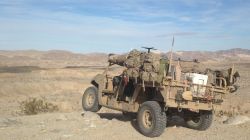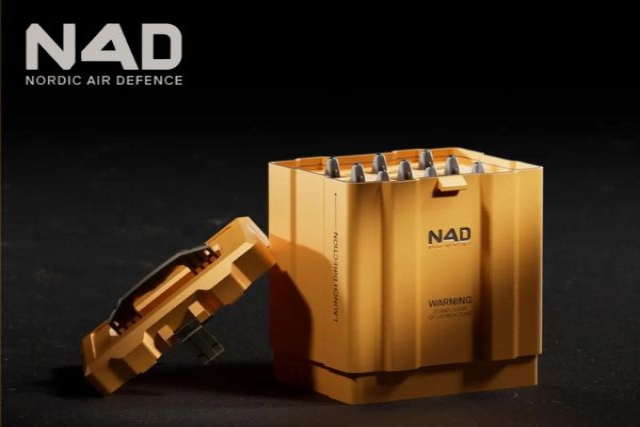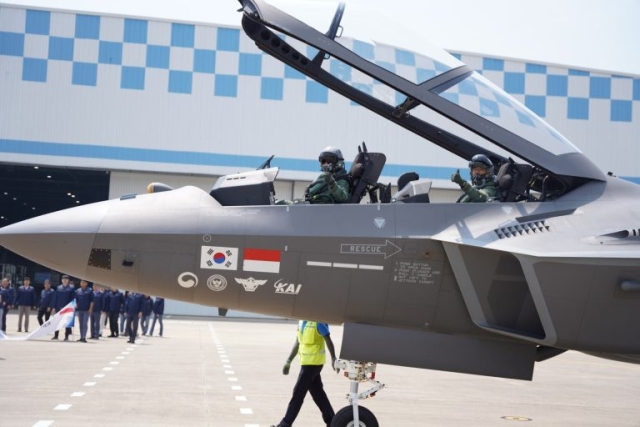Future AFVs To Be More Agile, Light Weight And Also Blast Resistant

Armored fighting vehicles are going to become more agile and light weight than their predecessors and will be able to maneuver against incoming threats decreasing the probability of hitting and penetrating the vehicle.
The Defense Advanced Research Projects Agency’s Ground X-Vehicle Technology (GXV-T) program intends to improve the survivability of ground-based armored fighting vehicles by increasing vehicle agility.
Vehicle agility involves the ability to autonomously avoid incoming threats, either by rapidly moving out of the way or reconfiguring the vehicle so incoming threats have a low pDARrobability of hitting and penetrating—all without injuring the occupants in the process.
Ground-based armored fighting vehicles and their occupants have traditionally relied on armor and maneuverability for protection. The amount of armor needed for today’s threat environments, however, is becoming increasingly burdensome and ineffective against ever-improving weaponry, DARPA explains on its website.
GXV-T seeks to develop revolutionary technologies to enable a layered approach to protection that would use less armor more strategically and improve vehicles’ ability to avoid detection, engagement and hits by adversaries.
Such capabilities would enable smaller, faster vehicles in the future to more efficiently and cost-effectively tackle varied and unpredictable combat situations, it added.
Similarly, the Polaris DAGOR, short for Deployable Advanced Ground Off-Road combat vehicle, was developed to meet a need for a combat-utility vehicle, light enough to be sling-loaded into battle from a UH-60 Black Hawk helicopter, according to Rich Haddad, general manager for Polaris Defense.
The DAGOR has a curb weight of 4,500 pounds and a maximum capacity of 3,250 pounds. It has a turbo-diesel, JP8 engine capable of a 500-mile range.
“It will carry a nine-man squad and all their gear,” Haddad said. “It’s bare bones; there is no armor on it, but it is designed to accept armor.”
From a support perspective, spare parts are readily available through a number of commercial vendors, Haddad said.
The US army next year will begin demonstrations of mine-resistant vehicles equipped with a new network architecture that will allow platforms to more easily share information, reduce weight and save power.
The demonstrations will be the first big test of the Vehicular Integration for C4ISR/EW Interoperability initiative. More commonly known as VICTORY, the effort comprises a new network architecture and specifications aimed at facilitating better interoperability between ground vehicles and their communications, command-and-control, computing and surveillance (C4ISR) equipment.
“We feel that if we get it in front of some soldiers and let them ride around [in] the vehicle … and demonstrate some operational vignettes, then by doing so we will have demonstrated to Army leadership the utility of VICTORY,” said Lt. Col. Brian E. Watson, chief of platform integration for program executive office combat support and combat service support. Watson is leading the Army’s efforts to integrate the new architecture on tactical vehicles for upcoming demonstrations.
VICTORY uses a data bus-centric design. “That’s a fancy way of saying everyone is on one network together, and that network is ethernet,” said David Jedynak, chief technology officer at Curtiss-Wright Defense Solutions.
The design permits the information from each piece of hardware plugged into the data bus to be shared across the network. It also consolidates the number of interfaces, allowing users to do more without having to move to a different device.
Meanwhile, AM General exhibited its Blast Resistant Vehicle – Off road (BRV-O) Joint Light Tactical Vehicle (JLTV) candidate, at the Association of the United States Army (AUSA) Defense Exhibition, Walter E. Washington Convention Center, Washington D.C.
The vehicles have been engaged in both severe, off-road testing and extensive survivability challenges by the U.S. Government. Vehicles are now demonstrating their capabilities in U.S. Government Limited User Testing (LUT).
"AM General has successfully completed and/or exceeded every milestone to date throughout the JLTV program's EMD phase, including the production readiness review, manufacturing readiness assessment and design understanding review," said AM General Vice President of Business Development and Program Management, Chris Vanslager. "We are very pleased with the BRV-O's performance and its demonstrated ability to fill the Capability Gap in Light Tactical Vehicles. Our BRV-Os will continue to demonstrate the groundbreaking capabilities this innovative vehicle brings to Soldiers and Marines during the Government's Limited User Test."









